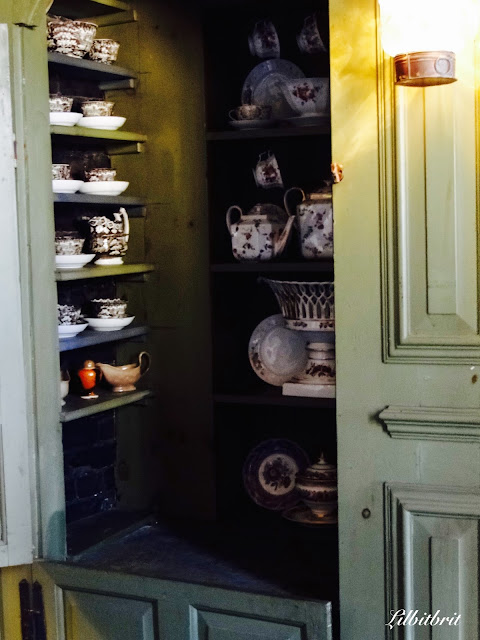Hi Dear Folk,
Yes really, another dining roomThe Octagon Room. I'm sure he must have used this room for other things too.
French red tin ware, that Henry Sleeper collected when in France and had shipped back.
Another painting done for Country Life, of this room, built for the octagonal table.
Tiger maple octagonal table. I must say I do like tiger maple and birds-eye maple.
View from the Octagon Room. Here is some further information about this room and A. Piatt Andrew, Jr.
Christine
Yes really, another dining roomThe Octagon Room. I'm sure he must have used this room for other things too.
French red tin ware, that Henry Sleeper collected when in France and had shipped back.
Another painting done for Country Life, of this room, built for the octagonal table.
Tiger maple octagonal table. I must say I do like tiger maple and birds-eye maple.
View from the Octagon Room. Here is some further information about this room and A. Piatt Andrew, Jr.
Sleeper added the Octagon Room, or the Souvenir de France, in 1920-21, after his return from
France where he worked with A. Piatt Andrew for the American Field Service. Its unique
decorating scheme shows Sleeper at his most daring and successful. The room’s color contrast is
striking, aubergine walls offering a dark background for vivid tiger maple furniture, a red-lacquer
screen, red glass, books bound in red morocco leather with gold titles, and a large collection of
red nineteenth-century French toleware. Sleeper commissioned an octagonal table and rug for
the center of the room. A portrait of Lafayette ties the room both to Sleeper’s experiences in the
First World War, and to the French support for the American Revolution, which helped end
America’s colonial status.
A. Piatt Andrew, Jr. (1873-1936), first introduced Harry Sleeper to Eastern Point in 1906;
Andrew had designed and built his own house, “Red Roof,” there in 1902. A Harvard economist
and later Director of the Mint, Assistant Secretary of the Treasury, and U. S. Representative for
fifteen years, Andrew was the first to sign the Beauport Guestbook in 1907. Both life-long
bachelors and close friends, they shared many interests. Sixty of Sleeper’s personal letters to
Andrew, covering his first decade at Beauport, have survived and been published as Beauport
Chronicle.These, along with his correspondence to Halfdan Hanson, provide the most
extensive written record available of Sleeper’s thoughts.
Christine








The red tin ware is stunning, what a great collection.
ReplyDeleteI like the red tin ware and the octagonal table. The view from the window is stunning.
ReplyDelete